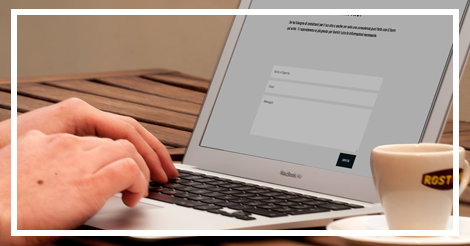Did you know that in 2020 alone, it is estimated there are over 2 billion people that use online shopping? This massive amount of people should generate approximately 4.2 trillion dollars in sales by the end of the year. It is clear that online shopping is where the people are spending their money, and especially with COVID bringing about so many unfortunate closures, it looks like online shopping is the main road ahead. Though closures are always sad to see, there is a bright future – online shopping and creating an online portal for ordering has never been easier. So, let Blue Link walk you through some important things to avoid, and what you should be doing instead.
Mistake 1: Poorly Designed and Optimized Website
So you’ve just created your first website and your first online portal for ordering. You’ve taken the first step in becoming an online business. Congratulations. Now, let’s say someone visits your website and it’s slow, clunky, items don’t load in their cart, and in general it’s a mess to use. They’re gone, and most likely for good. You have to treat your website the same way you would treat customer service, it has to be golden. When a customer has a bad experience in a store, they may leave and there is a good chance they won’t come back depending on how bad that experience was. For some, that store might be their only option in the area so they must continue being a patron as they have nowhere else to shop. With online shopping, this is never the case. You have millions and millions of options. If your online store isn’t cutting it, well, guess what, Amazon is, so bye. It’s that simple. One-click away and I’ve found everything I need with no hassle and no issues. So, make sure your website can handle the traffic.
Mistake 2: All Manual Processes
Another mistake that is common when creating an online portal for ordering, is the separation of the online portal and your business software. For example, Blue Link provides a fully integrated B2B eCommerce Platform (Online Order Portal) for use by both your wholesale distribution B2B customers and sales reps. When fully integrated, the whole system works as one to get the job done. There are no errors between the information on your online store and your ERP software that you use for tracking customers, inventory, and purchases. This makes the process of handling transactions and accounting reports and any sort of business processes much smoother, as you don’t get lost fiddling with manual processes halfway through. Orders placed online instantly are in your ERP for picking, packing, shipping, and inventory quantities get automatically updated accordingly. By separating these two, you leave yourself open to potential problems that aren’t always easy to fix, like incorrect inventory quantities, or having your pricing online instead of in your ERP. Stay one step ahead, and make sure you have a system that can handle both.
Mistake 3: Hidden Fees
Lastly, and potentially the most important thing, is no hidden fees. Meaning no surprise shipping costs that are double the cost of the product. No service fees that add fifteen dollars on top of the tax, and nothing that can scare the customer away. This is a big separator with normal retail and online shopping. When going into a store, the price marked is the price you pay. Online, there are times you get charged with additional fees that no one wants or is asking for. The more costs you throw at the customer, the less likely they are to spend money at your store. This leads to cart abandonment and never returning. There are too many options on the internet when it comes to online shopping. Many trusted, and many are cheap and reliable. So, if you have the only store that’s difficult to use and charges way too much for shipping, well, you’re not going to last. Make sure your online portal for ordering is easy to use, is part of your business software, and does not push hidden fees. If you can do that, you should be fine. Good luck.










